Recently, I had the pleasure of interviewing Shirley Squibb to get an insider’s glimpse of life in Tristan da Cunha, a South Atlantic Ocean island that is completely isolated from the outside world. Surrounded by rough seas and untouched wilderness, coupled with unpredictable weather conditions, Tristan was founded by a Portuguese admiral named Admiral Tristao da Cunha in 1506. Edinburgh of the Seven Seas is the main village in Tristan where all the islanders live as a community since 1810.
It would not be an exaggeration to describe Tristan as “The ends of the earth”. Geographically, Tristan is situated at a midway point between Buenos Aires and Cape Town. The only way to get to Tristan is by ship from Cape Town, and the journey usually takes up to 6 days.
Introduce yourself to our readers?
I am Shirley Squibb, the deputy head of the Tristan Tourism Department. The Tristan tourism department consists of a café, gift shop and museum along with an archive collection for visitors. We also have the Traditional Thatched House Museum that is built to reflect the era before the 1961 volcano eruption.
What is it like growing up in Tristan da Cunha?
It is a privilege to grow up on Tristan. There are so many adventures on our doorstep. North of the settlement is the sea – beaches to play on and catch fish with elderly.
South of the settlement is the mountain where adults take children for hikes to the base. It is like a totally different world there. One can see miles away in clear weather, while a yellow-nosed albatross soars overhead.
We can always go on boat trip to different parts of Tristan and the outer islands. Sometimes, we make it an exciting overnight camping trip. The biggest advantage of being a child on Tristan is the freedom that every kid would dream of. We can play in the village and surrounding fields without a care in the world.
What do you like and dislike about Tristan da Cunha?
At times, one can feel quite cut off from the world and it does take a long time to get to the mainland (approximately one week by ship), which may present a problem in the event of medical emergency. The hospital will treat a person the best they can here on the island, depending on the illness. The patient will be stabilized and made comfortable until a ship is able to take him.
With regular ship services and the constant advance of communications innovation, it makes the world feel smaller.
Being so isolated means our wildlife stay pretty much untouched. It is what draws people here to visit. We live a peaceful and joyful life here. The nature is just a stone’s throw away. Serious crime is nonexistent. One can leave your house unlocked all day and night.
How would you describe the people of Tristan?
The community works together and always helps each other out all the times. We are a farming community with potatoes being our staple food, which is grown on a plateau west of the village. A variety of vegetables and fruit are grown in the village. Families have their own livestock – cows and sheep. Fishing plays a big part in the community and is a source of income to the island.
How do locals spend their day?
Most of the people on the island have a day job, they either work for the Tristan da Cunha Government or the fishing factory. After work, they go back home to tend to their potato patches and animals.
Islanders build their own properties. If their homes are in need for repair or modification, they would do it after work. When someone is building a new house, others would come to help with the construction without being asked. The spirit of community living is so pervasive and palpable in all aspects of social interaction.
When all work is done, the community like visiting each other, hanging out at a local pub in the evenings or watching TV. The news keeps us in touch with the world events. the soaps are quite a hit here and are often a topic of conversation. On weekends and holidays, islanders like to gather with family and friends and go out for the day. They sometimes go fishing and cook their catch on the beach or find a quiet spot to have a braai (BBQ).
At the Potato Patches, there are small huts where islanders can stay for a few days. The place is without electricity so it can be very exciting for children. Some islanders like to go further afield with tents. On the longer holidays like Christmas, islanders will venture to the huts on other parts of the island to have a break away.
What are some fun activities and festivals on the island?
Queen’s day is always a fun day when the community gather at St Mary’s school for a day-long celebration. Various competitions would take place, like the largest potato or the best Teddy Cakes (Potato Cakes – a traditional dish) followed by games for both children and adults.
Sheep shearing is one of the highlights. It is a lot of fun especially for the children. The whole community head out to the sheep pen where the flock is herded in. Around the exterior of the main sheep pen are small pens. Islanders gathered in groups and catch their sheep and put them into the smaller pens for shearing. Once all the sheep are caught, the children will run around and catch the lambs. After all the sheep have been sheared, they are painted along with the lambs before being released. Every family has their own marking in a preferred color. The day ends with a herd of adorably colorful livestock grazing on the fields.
The Christmas holiday is the most wonderful time of the year in Tristan. People will take the opportunity to spend time with family and friends. There is the traditional “Old Years Night” celebration that takes place on New Year’s Eve. The celebration starts with men dressing in monster costumes and wandering around the village to scare the residents for fun.
There are receptions for the community later in the night officiated by the Administrator and Chief Islander. After the reception, islanders head off to someone’s house to have a braai until midnight. Minutes before the clock chimes midnight, everyone will gather at the Prince Philip Hall to hit the gong and wish each other a happy new year.
What do you miss Tristan the most when you are abroad? And what do you miss the outside world the most when you return to Tristan?
Leaving Tristan has become more of a regular occurrence. Sometimes for holidays sometimes for work. However, it all depends on the ships and availability as the fishing vessels can only carry a limited number of people.
Islanders who travel enjoy learning about different cultures and doing things that they don’t get to do on the island. There are things that we don’t have here on the island like hanging out at a café or coffee shop, enjoying a movie at a cinema or just having a variety of different stores to visit.
Islanders who have been away overseas always miss the smell and sound of the ocean. Islanders also miss the events and festivals where all the community members come together to celebrate. Although many islanders have left Tristan at some point, there are still some who have never stepped out of the island.
What are the things that visitors might want to take note before visiting Tristan?
Tristan is known for having four seasons in one day. The weather can change at any minute. When visiting, it is best to bring shorts and T-shirts along with a warm fleece and raincoat. A good pair of walking boots would also be highly recommended. Before visiting Tristan, one would need to contact the islands Administration who would advise you on your visit and request for a permission from the island council. One can either rents a guest house during the stay or opts for a homestay with a local family.
On arrival, a visitor will be greeted by the Head of Tourism who would then introduce them to their host.
Having lived close to an active volcano, what are some precautions that may need to be in place?
A scenario-based drill takes place on the island every so often. Everyone will treat it as if it is a real emergency. Head of households will ensure that they gather their families together along with their passports and meet at a designated safe area. From there, the whole community would be evacuated to a safe location.
Tell us about some of the unique local food?
There is quite a variety of local dishes, many of them are potato based of course, like Teddy Cakes (Potato Cakes) and Grate Tayda Pudding (Grated Potato Pudding). In the past when tea and coffee were not readily available, the islanders would drink Island Tea, a brew made with the leaves of the herb chenopodium ambrosioides.
The most popular tradition dish, that always served on special occasions like Christmas, would be Stuffed Roast Mutton – a special cut of meat that is sewn into a pocket and filled with a potato and herb stuffing.
What do you think are the best souvenirs to bring back from Tristan?
We have many beautiful local products for sale – our woollens are hand sheared, spun and knitted on the island. The products range from sweaters to socks. Our locally knitted socks are a very popular item especially the Love Socks. For more details on the Love Socks, please click here to learn more about the Love Sock range.
What kind of experience/memories do you hope for visitors to bring back from Tristan?
It is always nice to see visitors blend in with the community to experience what life is really like on Tristan. One should take the opportunity to go on hikes and boat trips around Tristan and the outer islands, I hope they would leave with memories of our beautiful island’s scenery, wildlife and the experience of the life of an islander.
End note: As I was putting this interview together, the voice of Bobby Darin was playing in the background.
Somewhere beyond the sea
She’s there watching for me
If I could fly like birds on high
Then straight to her arms
I’d go sailing
These lyrics hit home. Tristan is always waiting beyond the sea, waiting for people seeking a temporary refuge from the trials and tribulations of the world.
All photographs credit: Tristan Post Office and Tourism Centre


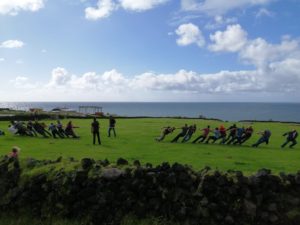
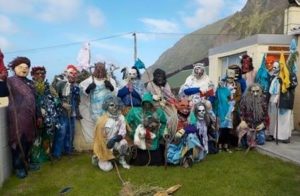
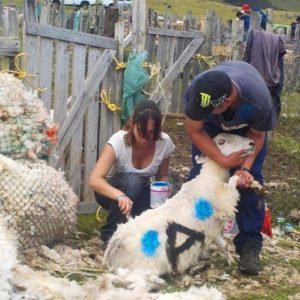




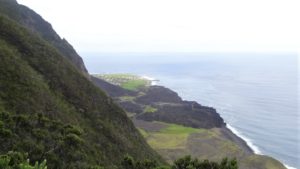
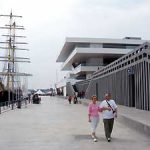





Leave a Reply